Example DEXA Body & Bone Report
Sample Report
Date of Birth:
| Date | Mon 15th Dec 2025 9:00 |
|---|---|
| Tests | DEXA Osteoporosis Scan, DEXA Body Composition |
15th Dec 2025
DEXA Body & Bone Bundle
Carried out by Colt Kemmer
DEXA Spine Scan Results
A spine scan, focusing on the lumbar spine, assesses bone mineral density (BMD), crucial for diagnosing osteoporosis and predicting fractures. It's particularly effective in evaluating vertebral fractures, which lead to pain, deformity, and height loss. Providing valuable insight into spine health, these scans are vital for maintaining skeletal integrity and mobility.
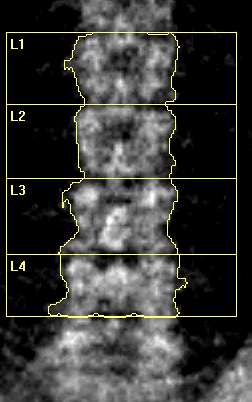
| Area (cm²) | BMC (g) | BMD (g/cm²) | T-Score | Z-Score | |
|---|---|---|---|---|---|
| L1 | 18.26 | 19.67 | 1.078 | 0 | 0.4 |
| L2 | 17.88 | 20.22 | 1.131 | 0.3 | 0.7 |
| L3 | 20.11 | 24.36 | 1.211 | 1 | 1.4 |
| L4 | 19.25 | 23.33 | 1.212 | 1.1 | 1.5 |
| Total | 75.5 | 87.58 | 1.181 | 0.6 | 0.5 |
Total BMD CV 1.0%
- The T-score shows how your bone density compares to the optimal peak bone density for your gender
- The Z-score shows how your bone density compares to the bone densities of others of the same age, gender, and ethnicity
- BMC (g) shows the bone mineral content in grams for each vertebra
DEXA Spine Scan Results
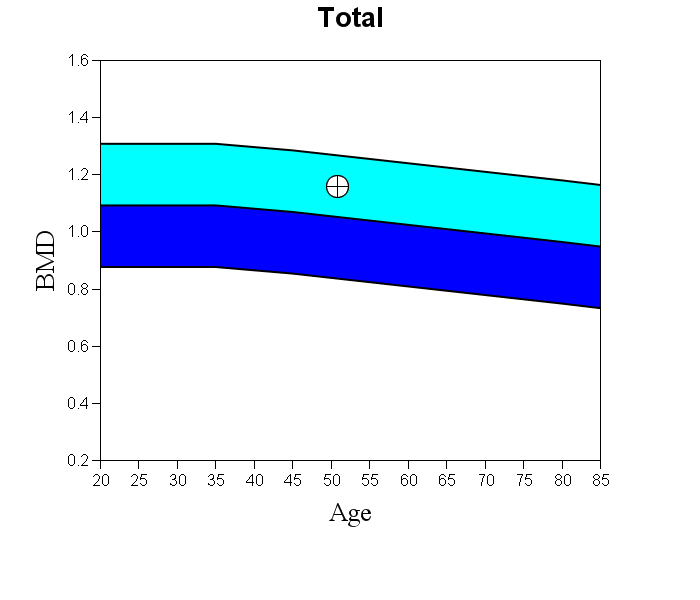
The T-score shows how your bone density compares to the optimal peak bone density of a 25 year old for your gender
The World Health Organization (WHO) defines osteoporosis and osteopenia based on T-scores:
- Normal bone density: T-score above -1 SD
- Osteopenia (low bone density): T-score between -1 and -2.5 SD
- Osteoporosis: T-score of -2.5 SD or lower
T-Score is 0.6. You have Normal Bone Density.
- The Graph above shows how your bone density compares to the bone densities of others of the same age, gender, and ethnicity
- The line through the middle shows the average for your age, with the section above showing above-average scores, and the section below showing below-average scores.
DEXA Left Hip Scan Results
Hip scans, designed to measure bone mineral density (BMD) specifically at the femoral neck, play a critical role in identifying osteoporosis-related fractures. These scans offer valuable insights into the risk of hip fractures, known for their severe repercussions like reduced mobility. Particularly crucial for older adults and individuals at risk of hip fractures, hip scans provide essential data concerning bone health in the hip region, aiding in proactive management and prevention strategies.
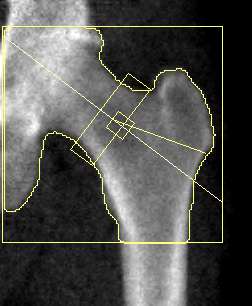
Breakdown
| Area (cm²) | BMC (g) | BMD (g/cm²) | T-Score | Z-Score | |
|---|---|---|---|---|---|
| Neck | 5.94 | 5.86 | 0.987 | 0.4 | 1.2 |
| Total | 41.98 | 49.57 | 1.181 | 1 | 1.3 |
Total BMD CV 1.0%, ACF = 1.046, BCF = 1.017, TH = 7.567
- Please Note: T scores and Z scores are not available for children or teenagers under 20 years old, and are less reliable for anyone over 85 years old.
- FRAX Scores can only be calculated for T score values above -2.5.
- FRAX Scores can only be calculated on hips.
DEXA Left Hip Scan Results
The graph below shows a pictorial representation of how your results compare to those of others in your age, sex, and ethnic group for comparison.
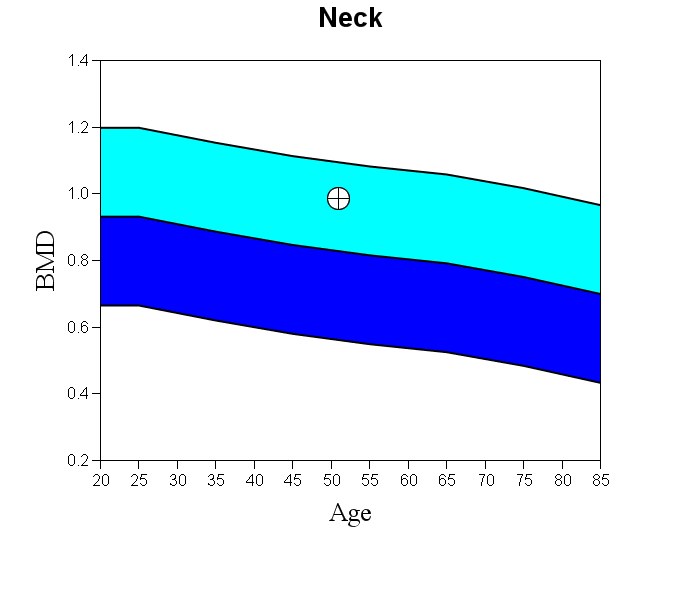
Bone Density
Based on the overall information contained in this report
your
WHO Classification is: Normal Bone Density.
T-Score is 0.4
DEXA Scan BMI Classification
- BMI stands for Body Mass Index. It originates from observations in the 1830s of a population of mainly white European men.
- Your BMI is calculated from your weight and height and is a simple - and blunt - method of assessing whether your weight is "normal" for your height.
- Because it is ultimately based on your weight, BMI cannot differentiate between fat and muscle mass, so often categorises muscular individual as overweight or obese.
- It also does not account for your fat distribution, which is crucial for assessing health risks, as fat in the upper body and abdomen increases the risk of life-changing diseases, such as type-2 diabetes and cardiovascular disease.
Normal weight
- Lower risk of obesity-related health conditions
- Reduced risk of cardiovascular diseases
- Improved overall health and longevity
DEXA Scan Body Fat
Body Fat Percentage: 27.2%
Body Fat Weight: 18.5 kg
How you compare to others
The graph opposite provides a standardised measure accounting for age and sex in the UK, leading to more accurate and clinically relevant assessments compared to BMI and body fat classifications.
Fat Mass Index (FMI)
The Fat Mass Index (FMI) shows how much fat your body has relative to your height. If you are taller, the fat spreads out more, and if you're shorter, it's more packed in.
6.45 kg/m²
44/100 - Compared to other 39 year old females.
Normal Range 5 - 8 kg/m².
Body Fat Classifications
| Classification | % Body Fat |
|---|---|
| Essential | 10 - 14 |
| Athletic | 14 - 21 |
| Fit | 21 - 25 |
| Average | 25 - 32 |
| Above Average | 32 - 39 |
| Obese | 39+ |
DEXA Scan Visceral Fat
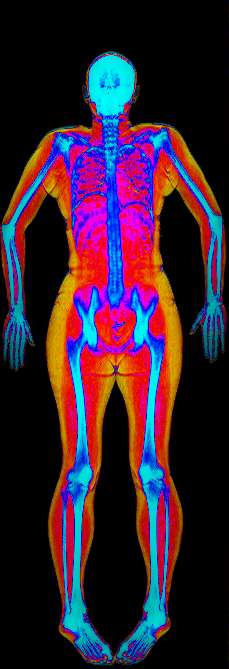
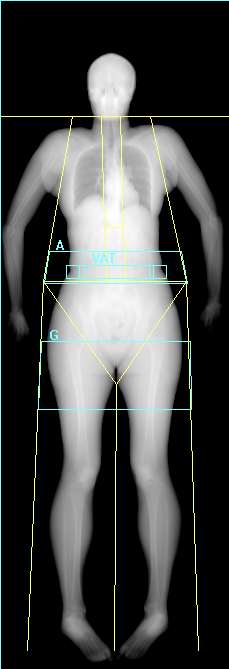
Visceral fat, sometimes called "spillover" fat, builds up around internal organs like the liver and pancreas once subcutaneous fat stores are full.
While some is protective, too much increases the risk of heart disease and diabetes.
A healthy measurement for you would be < 100cm².
Your Visceral fat measurement is 58.8cm²
Normal risk for metabolic disorders, cardiovascular diseases
20cm²
100cm²
160cm²
Compared to others the same age and sex
0
10
20
30
40
50
60
70
80
90
100
63/100 - Compared to other 39 year old females.
Maintenance
- Maintain a balanced diet
- Regular physical activity
- Monitor body composition
DEXA Scan Lean Mass
Lean Mass Percentage: 69.6%
Lean Mass Weight: 47.3 kg
Lean Mass Index (LMI)
The Lean Mass Index (LMI) shows how much lean mass your body has relative to your height. If you are taller, the lean mass spreads out more, and if you're shorter, it's more packed in.
16.5 kg/m²
0
10
20
30
40
50
60
70
80
90
100
42/100 - Compared to other 39 year old females.
Average LMI
Represents a balanced lean mass relative to height, supporting healthy metabolism, physical function, and long-term resilience when fat mass is also well-managed.
Recommendation
Maintain regular resistance training, ensure dietary protein is adequate, and recheck DEXA every 3 - 6 months to track trends in muscle and fat.
Appendicular Lean Mass Index (ALMI)
The Appendicular Lean Mass Index (ALMI) shows how much muscle your arms and legs have relative to your height. Values below 5.45 kg/m ² can be associated with Sarcopenia (Muscle atrophy).
6.93 kg/m²
0
10
20
30
40
50
60
70
80
90
100
32/100 - Compared to other 39 year old females.
Average ALMI
Reflects a healthy, balanced amount of limb muscle relative to your size. It's a positive sign for functional strength and metabolic health, especially if maintained with low visceral fat.
Recommendation
Maintain with consistent strength training, sufficient protein, and periodic reassessment to ensure muscle quality and fat balance remain optimal over time.
DEXA Scan Lean Mass
Your lean mass and how it's distributed across your body can be useful if you are trying to balance your muscle groups, or partake in particular activities that require higher regional concentrations.
Abnormally low muscle mass can also lead to increased risk of fractures, dementia, and metabolic disorders including Type 2 diabetes.
Imbalance
The charts below show your muscle symmetry from left to right.
| Left | Imbalance | Right | |
|---|---|---|---|
| Arms | 2.278 kg |
|
2.361 kg |
| Legs | 7.445 kg |
|
7.757 kg |
DEXA Lean Mass Distribution
Your lean mass and how it compares to others in the UK of the same age and sex broken down into regions.
Arms
0
10
20
30
40
50
60
70
80
90
100
Trunk
0
10
20
30
40
50
60
70
80
90
100
Legs
0
10
20
30
40
50
60
70
80
90
100
Compared to other 39 year old Female.
DEXA Scan Body Composition Results
| Lean Mass | % Lean | |
|---|---|---|
| Left Arm | 2.278 kg | 63.1 |
| Right Arm | 2.361 kg | 61.4 |
| Trunk | 24.761 kg | 74.4 |
| Left Leg | 7.445 kg | 65.5 |
| Right Leg | 7.757 kg | 65.0 |
| Subtotal | 44.601 kg | 69.6 |
| Head | 2.651 kg | 66.7 |
| Android ¹ | - | - |
| Gynoid ¹ | - | - |
| Total | 47.252 kg | 69.5 |
| Fat Mass | % Fat |
|---|---|
| 1.176 kg | 32.6 |
| 1.316 kg | 34.2 |
| 7.992 kg | 24 |
| 3.483 kg | 30.7 |
| 3.738 kg | 31.3 |
| 17.705 kg | 27.6 |
| 771 g | 19.4 |
| 0 g | |
| 0 g | |
| 18.476 kg | 27.2 |
| Bone Mass |
|---|
| 155.85 g |
| 175.09 g |
| 574.30 g |
| 412.00 g |
| 426.34 g |
| 1743.58 g |
| 531.54 g |
| - |
| - |
| 2275.12 g |
| Total Mass² |
|---|
| 3.608 kg |
| 3.842 kg |
| 33.295 kg |
| 11.359 kg |
| 11.934 kg |
| 64.038 kg |
| 3.974 kg |
| 0 g |
| 0 g |
| 68.012 kg |
¹ Android (Belly), Gynoid (Bum, hips and thighs) are sub-regions of the body, whose fat masses are already included in the Sub-total and Total figures.
² Total Mass = Lean Mass + Fat Mass + Bone Mass.
Bone Density Z-score
The Z-score shows how your bone density compares to the bone densities of others who are the same age, gender, and ethnicity.
- Zone 1: Very common, about 68 out of 100 people your age have Z-scores in this range.
- Zone 2: Less Common, about 28 out of 100 people your age fall in this range.
- Zone 3: Very Rare, about 4 out of 100 people your age have Z-scores within this range.
Your Z-Score is 0
Z-scores for bone density compare an individual's bone density to the average bone density of people of the same age, sex, and body size. A Z-score of 0 indicates that the bone density is exactly average. Scores below -2.0 may suggest a higher risk of bone fractures or underlying medical conditions affecting bone health.
Bone Density T-score
The T-score shows how your bone density compares to the optimal peak bone density of a 25 year old Female.
The World Health Organization (WHO) defines osteoporosis and osteopenia based on T-scores:
- Normal bone density: T-score above -1 SD
- Osteopenia (low bone density): T-score between -1 and -2.5 SD
- Osteoporosis: T-score of -2.5 SD or lower
T-Score is 0.2. You have Normal Bone Density
It's important to note that T-scores alone do not determine fracture risk; other factors such as age, sex, medical history, and lifestyle also play a role. Additionally, a T-score is just one component of a comprehensive assessment for osteoporosis and fracture risk. Interpretation of T-scores should be done in consultation with a healthcare professional.
Whole Body Bone Density
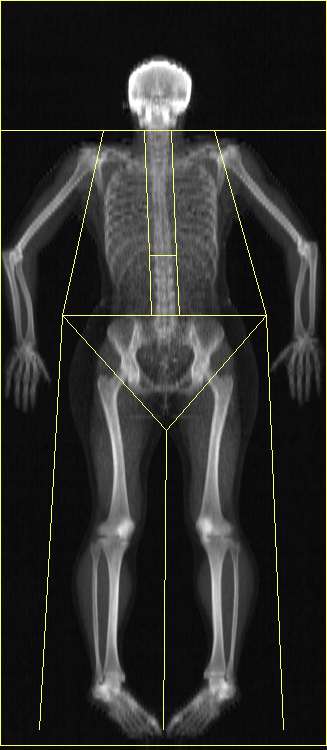
Your bone mineral density is 1.118g/cm²
| Area (cm²) | BMC (g) | BMD (g/cm²) | T-Score | Z-Score | |
|---|---|---|---|---|---|
| Left Arm | 219.04 | 155.85 | 0.712 | ||
| Right Arm | 239.40 | 175.09 | 0.731 | ||
| Left Ribs | 118.48 | 81.82 | 0.691 | ||
| Right Ribs | 107.89 | 75.40 | 0.699 | ||
| Thoracic Spine | 145.75 | 130.67 | 0.897 | ||
| Lumbar Spine | 54.56 | 55.77 | 1.022 | ||
| Pelvis | 181.17 | 230.63 | 1.273 | ||
| Left Leg | 374.16 | 412.00 | 1.101 | ||
| Right Leg | 382.71 | 426.34 | 1.114 | ||
| Subtotal | 1823.15 | 1743.58 | 0.956 | ||
| Head | 212.52 | 531.54 | 2.501 | ||
| Total | 2035.67 | 2275.12 | 1.118 | 0.2 | 0 |
Longevity Health Index Scan
The Longevity Health Index turns your scan data into a personalised blueprint for long-term health and performance.
It analyses key markers - lean muscle, visceral fat, and bone density - against science-backed longevity targets, then maps your results in a clear, visual dashboard to track progress.
More than a report, it's your roadmap to staying stronger, healthier, and biologically younger for longer.
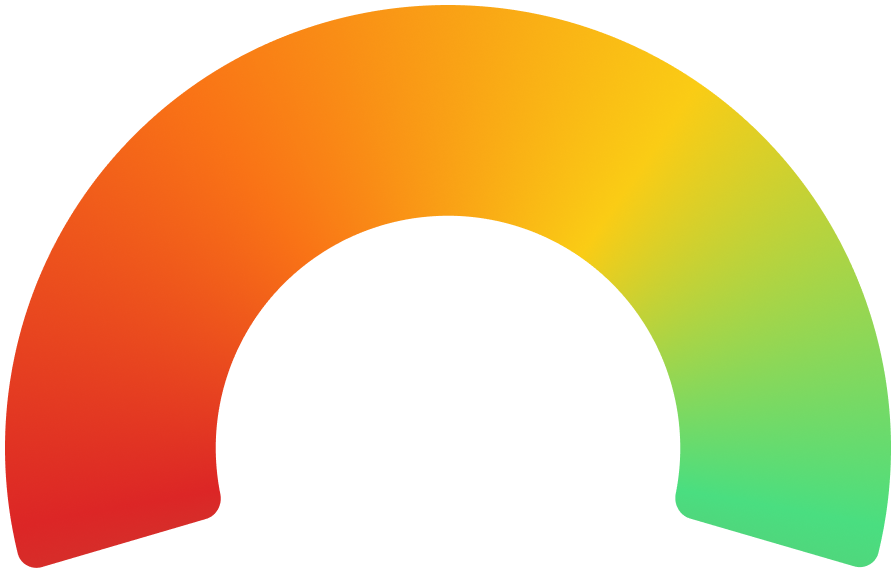
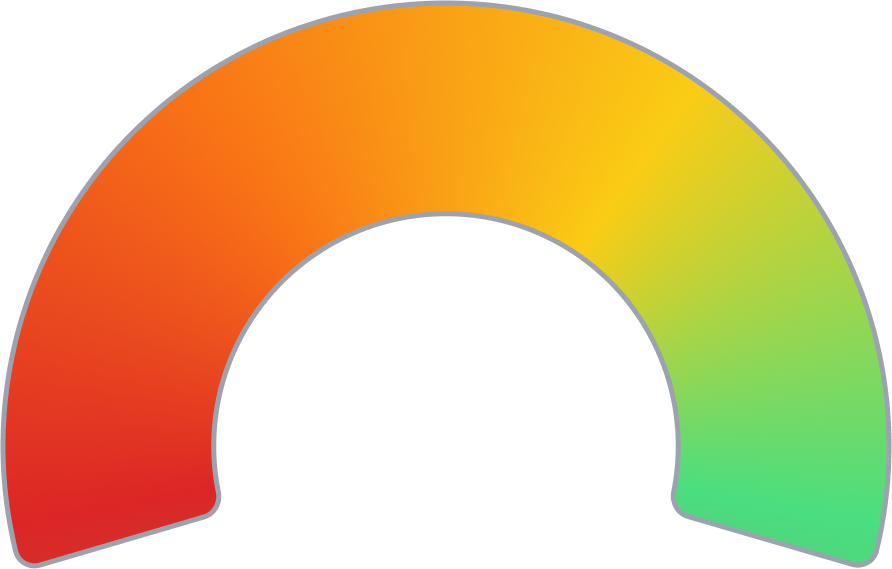
| Metric | Result | Target | Points | Progress |
|---|---|---|---|---|
| Visceral Fat | 58.8 cm² | < 80 cm² | 37 / 37 |
100.0%
|
| Appendicular LMI | 6.93 kg/m² | > 6.95 kg/m² | 22.45 / 24 |
93.5%
|
| Bone Mineral Density* | 0 | >= 0 | 18 / 18 |
100.0%
|
| Fat Mass Index (FMI) | 6.45 kg/m² | 5 - 8 kg/m² | 13 / 13 |
100.0%
|
| Muscle Symmetry | 7.84 % | < 20 % | 8 / 8 |
100.0%
|
*This score reflects the overall bone density of the entire body, offering a general overview. For detailed information, a dedicated scan of the hip and spine is required.
Your Personal Action Plan
Visceral Fat
Healthy
Continue moderate-intensity exercise and monitor waist circumference.
Staying in this range supports metabolic flexibility and lowers risk of insulin resistance with age.
Appendicular LMI
Low
Increase your protein intake and consider regular resistance training.
Low appendicular mass is a key marker for Sarcopenia, which accelerates biological ageing.
Bone Mineral Density*
Healthy
Continue resistance and impact activities; monitor BMD annually if at risk.
Preserving bone density wards off osteoporotic complications that can drastically shorten lifespan.
Fat Mass Index (FMI)
Healthy
Maintain balanced macronutrients and regular training.
This range supports healthy ageing by minimising fat-driven inflammation while preserving lean mass.
Muscle Symmetry
Healthy
Maintain symmetrical programming and proper form.
Symmetry supports joint health and efficient movement, helping sustain functional longevity.
Interpreting your Dexa Scan Results
Interpreting the Data
Here's what each column means in your DEXA scan body composition results:
- Fat Mass (g): The total amount of fat in grams.
- Lean + BMC (g): Fat-free mass. The combined weight of lean mass (muscle, organs, skin, water, etc) and bone in grams.
- Total Mass (g): The total combined weight of fat, muscle, and bone.
- % Fat: The percentage of the total mass that is fat.
- BMC: Bone Mineral Content refers to the total quantity of minerals (primarily calcium and phosphorus, measured in grams) present in the bones and the total is essentially the weight of your bones. It is an important component of bone health assessment, along with bone mineral density (BMD). The total mass of all the bones in your body (the weight of your skeleton) is much lower than most people expect, between 1.5kg and 4kg.
- BMD: Bone Mineral Density is a key indicator of bone strength. The higher the density (within limits), the stronger your bones and the less likely you are to fracture after a fall or impact. Low bone density can indicate conditions such as osteopenia and osteoporosis. BMD is typically measured in grams per square centimetre (g/cm²) or grams per cubic centimetre (g/cm³).

A huge thanks
On behalf of the entire team at BodyView, we would like to express our appreciation for coming to see us. Your business is super important to us,
and we are deeply committed to helping you achieve your goals. Should you require any further assistance, please do not
hesitate to reach out; we are here to help.
If your experience with us has been a positive one, it would be really appreciated if you could take a moment to share your feedback by leaving a
review on Trustpilot or Google.
Kindest Regards
Team BodyView.
This report was compiled using BodyCompPro software for DEXA scanners, providing you with gold standard results interpreted through the most advanced body composition software available.
Disclaimer
The information provided is for general guidance and not a substitute for professional advice. Always consult a healthcare professional before starting any fitness or weight loss program, especially if you have health conditions or take medications. Use the information at your own discretion and responsibility.

